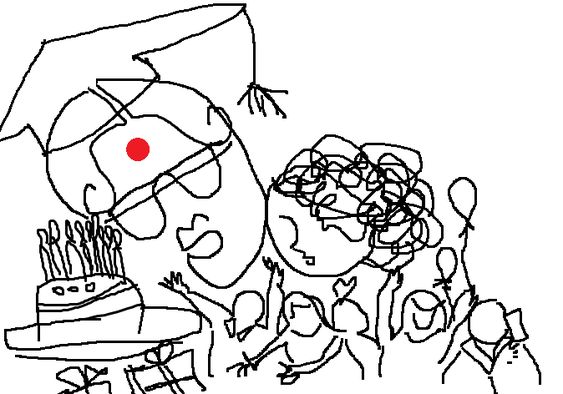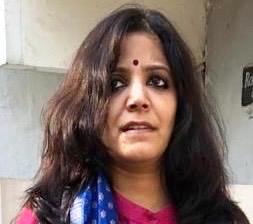Disrupted Education and depressed minds are two distasteful truths of the pandemic that we are enduring and may have to endure for a long time with no diagnostic insight. Need to learn online seeks motivated individuals, assuming the technology is available and functional. Depression leading to suicide is much more intrinsically difficult to decrypt. Does it inspire any confidence that WHO reports it, as the leading cause of violent death, striking down about a million people worldwide each year, more than all wars and murders combined?
Times such as these call for our indomitable spirit to show us the way. That spirit, however, is rooted in “Para Vidya’ or spiritual or ethereal values we have, along with ‘Apara Vidya’ that we learn in the universities. A great deal depends on what religion teaches us. Hinduism, the oldest religion in the world, is also the ‘Sanatana Dharma’ or “the eternal tradition”. Hindus believe that the truth is eternal as the Brahman, that the Vedas or sacred hymns are the ultimate authority, that everyone should strive to achieve dharma, that individual souls are immortal and that the goal of the individual soul is moksha or salvation. In these Covid times of monumental pressures, it is imperative to revisit these exemplary values enshrined in Hinduism. Should these tenets then, not be the building blocks we are looking for in our future universities as they steer academics?
Adi Shankaracharya and his Advaita philosophy, the idea that the true self, Atman, is the highest metaphysical reality of the universe can truly help us, overcome the pressures of isolation and depression. It can relieve us of this stress as much as let us overcome the inadequacies of learning.
Can his paragon, the ‘Brahma-sutra-bhashya’, a commentary on ‘Brahma-sutra’, the fundamental text of the Vedanta school be the leading light? The third chapter discusses epistemology, a path to gaining spiritually liberating knowledge, in a way that ‘Para Vidya’ and ‘Apara Vidya’ converge into a beautiful seamless blend. Fourth, the last chapter, tells us why such knowledge is important to us. In a way, the third takes us through new learning pedagogies and the fourth promises better mental health. Exemplary, since the paradox of the Self and suicidal behaviour in Covid induced Psychosis is overcome, only by knowing the self.
Adi Shankaracharya in his sojourns taught that supreme Brahman is Nirguna, (without Gunas), Nirakara, (formless), Nirvisesha (without attributes), and Akarta (the non-agent). What is interesting is the pedagogy and andragogy he used to teach both children and adults that will be useful in these virtual schooling, ‘covid-gogy’, and digitally fatigued times. As universities, colleges, and schools strive to pivot to virtual learning environments on very short notice, the world’s premier educational, cultural and media institutions must ‘open up’ their virtual doors to a multitude of educational resources and courses alike. The modern teacher though well versed in educational technology, seldom used effective methods in a classroom. He is now caught on the wrong foot suddenly. It will be worth imbibing the Acharya’s ten methods of pedagogies if we were to transcend these challenging times. The ‘Mathas’ founded by Shankaracharya, even as they had a great influence in reforming Hinduism, depended as much on his methods to reach people, as much as the depth of learning, debate, logical reasoning they stressed upon.
Is ‘Shravan Vidhi’ or listening attentively to what the Guru says, not equivalent to a lecture session or listening to pre-recorded sessions akin to NPTEL/UDEMY/ or COURSERA like the content? ‘Manan Vidhi’ or meditating over what Guru teaches, implies dialectics and critical thinking to assimilate the essentials. Don’t we reflect and concentrate, so essential for real learning? ‘Nididhyasa Vidhi’, teaches us to reach conclusions, understand, think, and logically conclude. ‘Prashnottar Vidhi’, seeks to learn through Question – Answer methods as followed in the Upanishads or the sacred treatises. ‘Tark Vidhi’ or the ‘Karya Karan Bhav’ or the cause and effect methodology, so effective in building reasoning skills and remove doubts of the students, is hardly followed by any modern teacher. ‘Vyakhya Vidhi’ or teaching by exposition, ‘tika’ or commentary or annotation is probably not used at all by any teacher. ‘Adhyaropa Apavad Vidhi’, a projection method where the student is guided to see the real into the unreal is not even spoken about. ‘Drishtant Vidhi’ that helps students understand difficult subject matter through illustrations is rarely used. ‘Katha-Kathan Vidhi’, another beautiful teaching-learning pedagogy of storytelling was used in the Upanishads. Are we not aware of Vishnusharma’s Panchtantra? Some institutions do use ‘Case Studies’, but then good case studies are hard to come by. Finally, the Acharya has also bestowed his wisdom through the ‘Upadesh Vidhi’, a lecture method used in helping students understand.
Adi Shankara’s teaching-learning methods and vignettes espouse a complete student centric learning that we only speak about today. Unfortunately, except for ‘Shravana Vidhi’ and ‘Upadesh Vidhi’, neither our schools nor our teachers experiment with any of the other methods. This results in teacher centric education that can actually put off many a learner. That Sringeri Sharada Peetham, formed on the ethos of Yajur Veda or the Dvaraka Peetham formed on Sama Veda or Jyotirmatha Peetham, formed on Atharva Veda and Govardhana Matha, formed on Rig Veda have all followed the Acharya’s pedagogies and are still following them speaks volumes of their commitment and clairvoyance. It however, is extremely unfortunate that the universities have chosen to discard all, except two. Is it not time to reinvent?
Very gratifying that some online content providers are experimenting by building all these pedagogies in their online content delivery, when one thought it would be difficult to do so in the online mode. Distance education along with media organizations and technology companies are addressing the pragmatic modes of instruction and delivery, affordable and convenient access. They even cater to a social and egalitarian ethos being associated with cultural pedagogies, alternative curricula, community education and independent learning.
In these times of Covid led afflictions, building mental strength is paramount. The American Psychological Association defines ‘Mental Resilience’ as: “The process of adapting well in the face of adversity, trauma, tragedy, threats and significant sources of stress.” What better way can there be, than Yoga, Pranayama, Concentration and Meditation, and the endless wisdom of Shankaracharya the ‘Jnana Yogi-Raja Yogi’, to help release healthy brain chemicals like endorphins and dopamine that help balance the mood and combat depression?
1,579 total views, 2 views today


